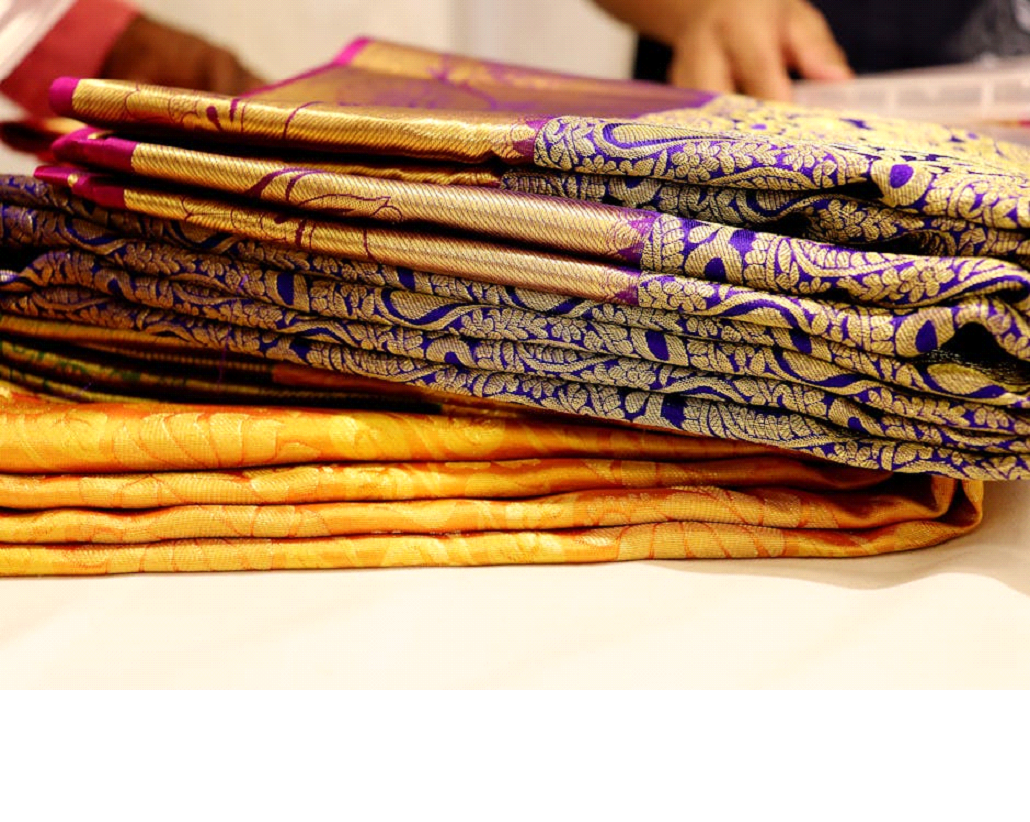
How to store a silk saree for longer rack life
Share
Introduction:
Silk sarees are not just garments; they are treasured heirlooms, woven with tradition and timeless elegance. However, preserving their beauty and prolonging their lifespan requires special care, especially when it comes to storage. Whether it's a saree you donned on your wedding day or a piece from your 'MyFirstSaree' collection, knowing how to store them properly ensures that they remain as vibrant and graceful as the day they were first worn. In this guide, we'll walk you through expert tips and techniques that will help you protect your treasured silk sarees and keep them in pristine condition for years to come.
Understanding Silk Sarees
Image courtesy: Pexels

Attributes of silk sarees:
Silk sarees are not just garments; they are pieces of art draped in culture and elegance. Known for their luxurious feel and exquisite appearance, silk sarees boast a set of unique characteristics that make them stand out. Silk, a natural protein fiber, gives the saree a shimmering appearance, as its structure allows it to refract incoming light at different angles. Moreover, silk sarees are highly absorbent, making them comfortable to wear even in warmer climates. They are relatively lightweight, yet the fabric has a good grip, which is essential for the beautiful pleats in a saree to hold well. However, these same traits make silk sarees delicate and susceptible to damage from moisture, light, or improper handling.
Importance of proper storage for silk sarees:
Storing silk sarees the right way is crucial for several reasons. First, it helps in preserving their color, sheen, and texture for years, or even generations. Improper storage can lead to fading, discoloration, and weakening of the fabric, which may ruin the saree's luxurious appeal. Additionally, silk is prone to damage from pests like silverfish, which are attracted to natural fibers. By storing silk sarees correctly, you also protect them from such pests and avoid potential damage like holes. Finally, good storage practices prevent permanent creases and maintain the original drape and fall of the saree, ensuring that each time you wear it, it looks as splendid as the first.
Preparation for Storage:
1. Cleaning silk sarees before storage:
Before storing your silk saree, it is essential to ensure that it is clean. Any dirt, stains, or body oils left on the saree can permanently damage the fabric over time. Ideally, dry cleaning is the best option for silk sarees because it prevents water-induced stains and does not alter the fabric’s integrity. However, if a dry cleaning service specifically for silk is not available, consider a gentle hand wash with a mild soap. Never wring or twist the saree to remove excess water; instead, gently press the water out and roll it in a clean towel to blot dry. Make sure the saree is completely dry before storing it to prevent any mildew or odor.
2.Choosing the right storage space for silk sarees:
The choice of storage space is pivotal in extending the life of your silk saree. Here are some guidelines to choose an appropriate storage area:
- Opt for a cool, dry place away from direct sunlight to prevent fading and deterioration of the silk fibers.
- The storage area should be clean, well-ventilated, and must not be prone to dampness or fluctuations in temperature, which could encourage the growth of mold and pests.
- Avoid using metal hangers or clips for hanging silk sarees as they can corrode and stain the fabric. Instead, use padded hangers if you must hang them, although folding is generally preferred.
- For folding, do not store silk sarees in cardboard boxes which might secrete acids that could stain the saree. Instead, use acid-free tissue paper to wrap the saree, which not only prevents acidity damage but also helps in absorbing any residual moisture.
- Change the folds periodically to avoid permanent creases on the saree.
By understanding the unique needs of silk sarees and preparing them carefully for storage, you ensure their longevity and beauty. Proper storage will keep your precious sarees looking vibrant and splendid, ready for every special occasion without fear of damage or degradation. Remember, how you care for your saree reflects how you cherish the memories associated with it.
3. Tips for Storing Silk Sarees:
Silk sarees, with their elegance and delicate fabric, require careful handling and storage to maintain their beauty and longevity. Proper storage not only preserves their quality but also prevents them from getting damaged over time.
Folding vs. hanging silk sarees
When it comes to storing silk sarees, the ideal method is folding them. While hanging may seem convenient, it can cause the fabric to stretch or warp over time due to the weight of the saree. To fold a silk saree properly, lay it flat on a clean surface, fold it inwards from both sides to avoid any zari or embroidery getting caught and causing a tear. Then, gently fold it into a rectangle. Remember to refold the saree in different patterns every few months to prevent permanent creases.
4.Using appropriate covers for silk sarees:
Covering silk sarees is crucial to protect them from dust and environmental pollutants. Use soft, breathable covers such as muslin or pure cotton. These materials allow air circulation and prevent moisture accumulation, which is vital for preserving the saree’s texture and color. Avoid using plastic covers, as they trap humidity and can lead to mildew growth.
Avoiding direct sunlight and moisture exposure for silk sarees
Sunlight can be particularly damaging to silk as it can fade the colors and weaken the fabric. Always store silk sarees in a cool, dark area of your wardrobe or chest of drawers. Additionally, ensure the storage area is dry since moisture is a major culprit in damaging silk fabrics, often causing mildew or a musty smell. A well-ventilated cupboard away from external walls (which may be prone to dampness) is ideal.
Additional Preservation Techniques
Every few months, it’s beneficial to air out your silk sarees. This process helps refresh the fabric and prevents any odors from settling in. On a dry, pleasant day, take your silk sarees out of their storage space and hang them in a shaded area for a few hours. Ensure they are away from direct sunlight to avoid color fading.
Checking for pests and mold growth:
Regularly inspect your storage area and the sarees for any signs of pest infestations or mold growth. Pests like silverfish and moths can cause significant damage to silk fabrics. Using naphthalene balls or cedar blocks can help repel these pests, but ensure they don’t come in direct contact with the saree fabric to avoid stains. If you spot mold or mildew on your sarees, clean them promptly according to the specific care instructions for silk. Consider consulting a professional cleaner specializing in silk fabrics to ensure proper handling and maintenance.
Implementing these storage tips and preservation techniques will significantly contribute to maintaining the allure and longevity of your silk sarees, ensuring they stay as splendid as when you first added them to your collection. Remember, careful handling and periodic maintenance are key to preserving the exquisite appeal of your silk sarees for years to come.
Conclusion:
Preserving your silk saree is all about meticulous care and attentive storage. By following the outlined tips and strategies, you can ensure that your cherished sarees remain vibrant and durable for many years to come. Always remember to avoid direct sunlight, utilize acid-free materials for wrapping, and allow sufficient space when storing. With these thoughtful practices in place, your silk sarees will continue to be a symbol of elegance and heritage in your wardrobe. Embrace these methods, and watch as your sarees withstand the test of time, preserving both beauty and tradition.

